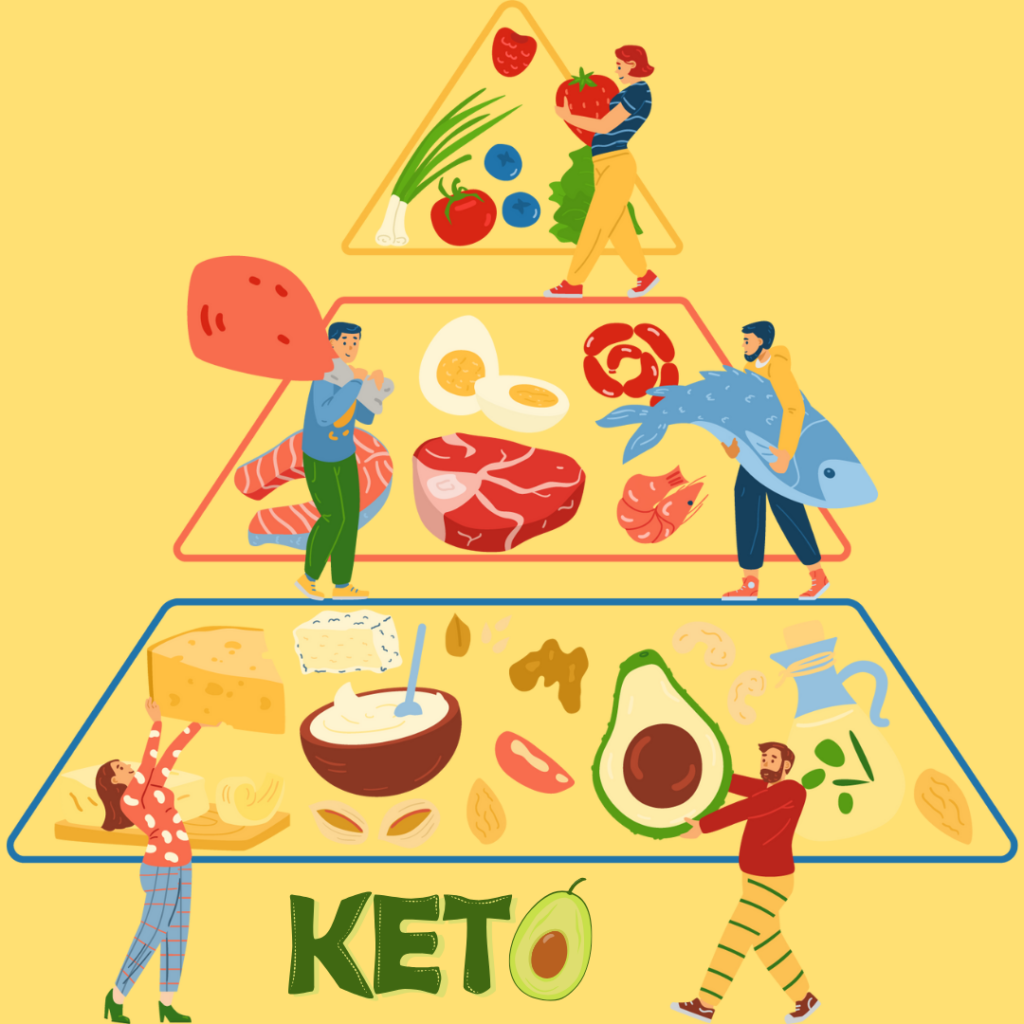The Ultimate Keto Resource Guide
20 Foods To Eat on The Keto Diet
Ketogenic Diet For Weight Loss
What are the 9 rules of keto?
Keto Rules
- Cut out the carbs.
- Eat high quality protein.
- Go heavy on the fats. Avocado Split in Half.
- Hydrate, hydrate, hydrate.
- Stick to simple beverages.
- Avoid starchy vegetables.
- Avoid starchy fruits.
- Keep your food consumption to an 8 hour window.

Basics of a Keto Diet
The ketogenic diet (keto diet) is a high-fat, low-carb, moderate-protein diet designed to shift your body into a metabolic state called ketosis, where fat is burned for energy instead of carbohydrates. Here’s a breakdown:
- Macronutrient Ratios:
- Carbohydrates: 5-10% of total daily calories (~20-50g per day)
- Fats: 70-80% of total daily calories
- Protein: 10-20% of total daily calories
- How It Works:
- When you drastically reduce carbohydrate intake, your body depletes its glycogen stores.
- The liver begins to convert fats into ketones, an alternative energy source for the brain and body.
- This process promotes fat burning and stabilizes blood sugar levels.
Foods to Eat
- Healthy Fats:
- Avocados, olive oil, coconut oil, butter, ghee, and nuts (macadamia, almonds).
- Protein:
- Meat (beef, pork, chicken, lamb), fatty fish (salmon, mackerel, sardines), and eggs.
- Low-Carb Vegetables:
- Leafy greens (spinach, kale), broccoli, cauliflower, zucchini, and asparagus.
- Dairy:
- Full-fat cheese, heavy cream, and unsweetened yogurt (in moderation).
- Snacks:
- Pork rinds, seeds, and keto-friendly bars.
- Others:
- Berries (in moderation), dark chocolate (85% cocoa or higher).
Foods to Avoid
- Sugary Foods:
- Soda, candy, cakes, and pastries.
- Starchy Vegetables:
- Potatoes, corn, and peas.
- Grains:
- Bread, rice, pasta, and cereals.
- Legumes:
- Beans, lentils, and chickpeas.
- Unhealthy Fats:
- Processed oils like soybean oil and margarine.
- High-Carb Fruits:
- Bananas, apples, oranges, and grapes.
How to Get Started
- Set Goals:
- Define your reason for starting keto (weight loss, improved focus, better energy levels, etc.).
- Plan Your Meals:
- Use apps or trackers like MyFitnessPal to monitor carb, fat, and protein intake.
- Prep meals in advance to avoid temptation.
- Grocery Shop Smart:
- Stock up on keto-friendly foods and clear out high-carb items from your pantry.
- Hydrate:
- Drink plenty of water to prevent dehydration and combat the “keto flu” (temporary symptoms like fatigue, headache, or nausea).
- Consider Electrolytes:
- Add salt to your food and include magnesium- and potassium-rich foods (spinach, avocados) to balance electrolytes.
- Gradual Transition:
- If reducing carbs drastically feels overwhelming, taper off over a week or two.
- Test for Ketosis:
- Use urine strips or a blood ketone meter to check if your body has entered ketosis.
Common Challenges and Tips
- Keto Flu:
- Stay hydrated and increase salt intake.
- Plateauing:
- Reassess your macros and reduce calorie intake if necessary.
- Social Settings:
- Plan ahead by checking menus or bringing keto-friendly options to gatherings.
Example One-Day Keto Meal Plan
- Breakfast:
- Scrambled eggs cooked in butter with spinach and avocado.
- Lunch:
- Grilled chicken salad with olive oil dressing and a sprinkle of cheese.
- Snack:
- Handful of macadamia nuts.
- Dinner:
- Pan-seared salmon with asparagus and a side of cauliflower mash.
- Dessert:
- A square of dark chocolate or keto-friendly cheesecake.
Starting the keto diet may feel like a big change, but with proper preparation and commitment, it can become a sustainable lifestyle. Let me know if you’d like more personalized advice or resources!